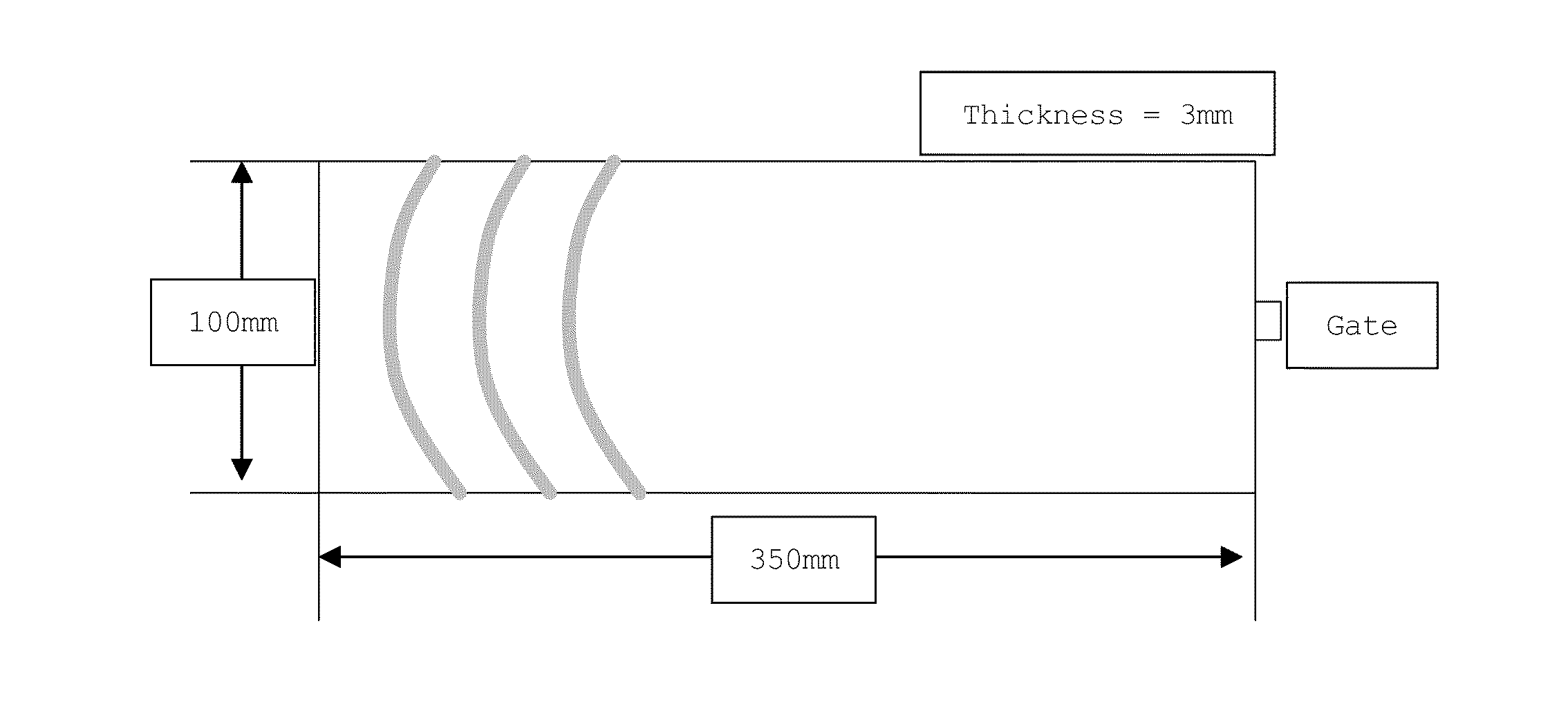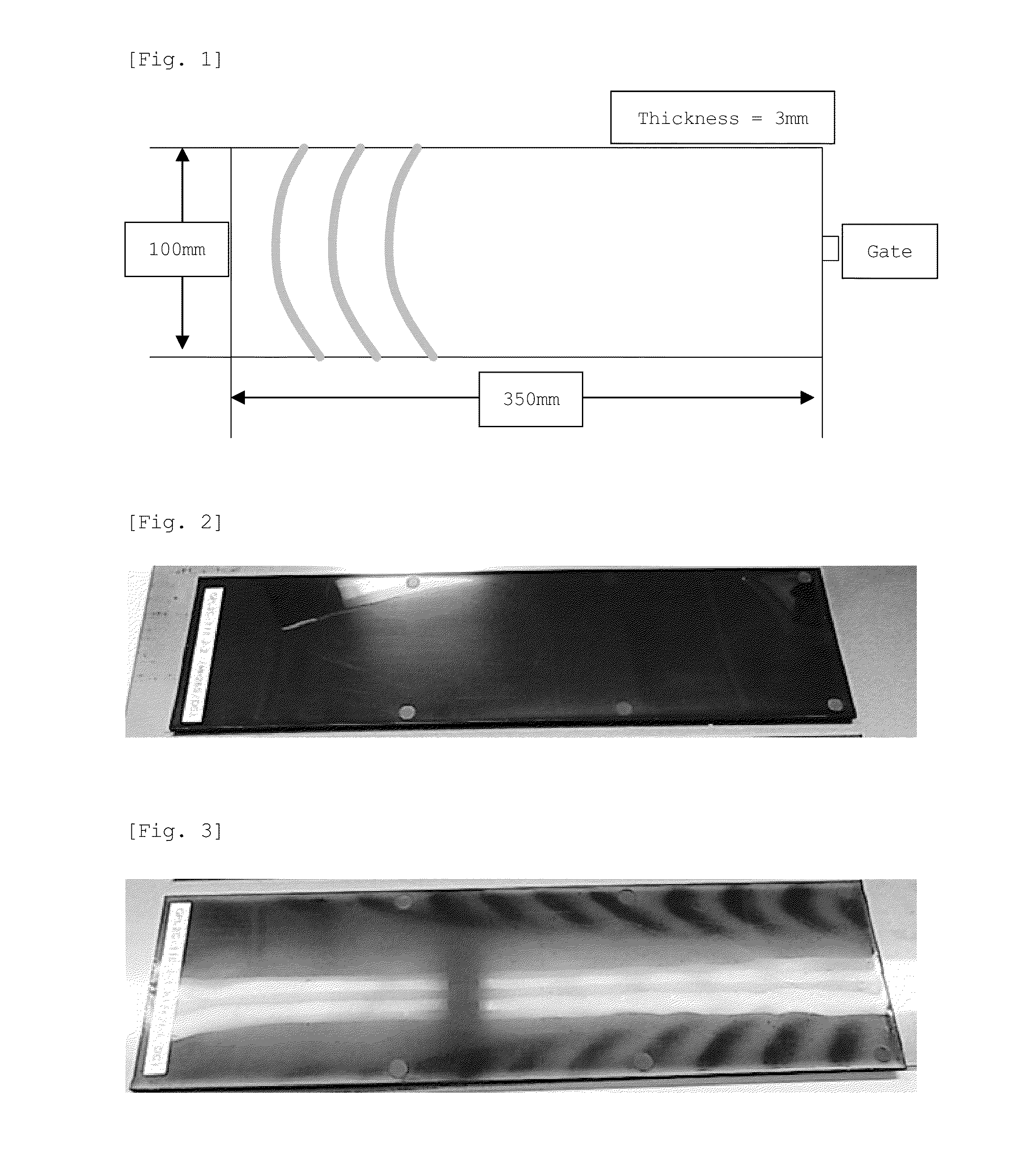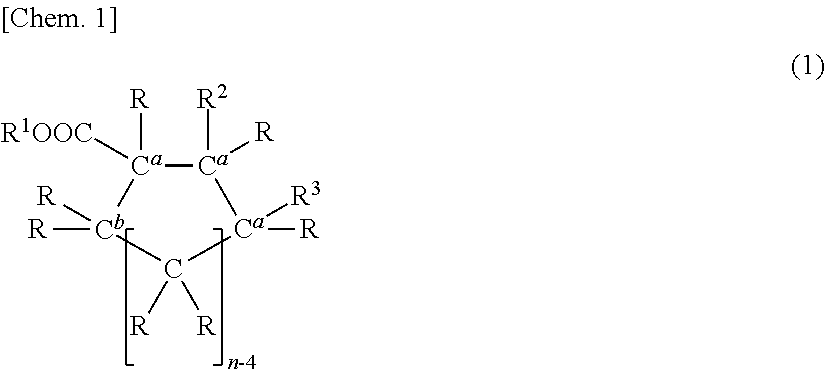Propylene-based block copolymer, composition containing the copolymer, and molded products obtained therefrom
a technology of propylene polymer and composition, which is applied in the direction of transportation and packaging, tyre parts, special tyres, etc., can solve the problems of inability to increase rigidity and improve the appearance of molded products, and achieve the stabilization of in-mold flow during injection molding, the effect of high melt viscoelasticity and increased fluidity of propylene polymer of wide molecular weight distribution
- Summary
- Abstract
- Description
- Claims
- Application Information
AI Technical Summary
Benefits of technology
Problems solved by technology
Method used
Image
Examples
example 1
Preparation of Solid Titanium Catalyst Component (α1)
[0889]75 g of anhydrous magnesium chloride, 280.3 g of decane and 308.3 g of 2-ethylhexyl alcohol were thermally reacted at 130° C. for 3 hours to give a homogenous solution, then to the solution was added 17.7 g of ethyl benzoate, and they were further stirred and mixed at 130° C. for 1 hour.
[0890]The homogeneous solution obtained as above was cooled down to room temperature, and then 38 ml of this homogeneous solution was dropwise added in the whole amount to 100 ml of titanium tetrachloride kept at −24° C.; over a period of 45 minutes with stirring at a rotational speed of 200 rpm. After the dropwise addition was completed, the temperature of this mixed solution was raised to 80° C. over a period of 4.6 hours, and when a temperature of 80° C. was reached, to the mixed solution was added diisobutyl 3,6-dimethylcyclohexane-1,2-dicarboxylate (mixture of cis isomer and trans isomer) in an amount of 0.0875 time the molar quantity of...
example 2
[0933]Using the solid titanium catalyst component (α1), polymerization was carried out in the same manner as in Example 1, except that the residence time of the polymerization conditions in the gas phase polymerizer was changed to 0.47 hour. Thus, a propylene-based block copolymer (A-2) was obtained. The amount of the room temperature n-decane-soluble portion (Dsol) was 8.6% by weight, and the amount of the room temperature n-decane-insoluble portion (Dinsol) was 91.4% by weight.
[0934]Molding
[0935]The propylene-based block copolymer (A-2) was molded into ASTM specimens in the same manner as in Example 1. Evaluation results of properties of the molded article, appearance of the injection molded article and injection molding fluidity are set forth in Table 2.
example 3
[0942]Using the solid titanium catalyst component (α1), polymerization was carried out in the same manner as in Example 1, except that the residence time of the polymerization conditions in the gas phase polymerizer was changed to 0.32 hour. Thus, a propylene-based block copolymer (A-3) was obtained. The amount of the room temperature n-decane-soluble portion (Dsol) was 5.9% by weight, and the amount of the room temperature n-decane-insoluble portion (Dinsol) was 94.1% by weight.
[0943]Molding
[0944]The propylene-based block copolymer (A-3) was molded into ASTM specimens in the same manner as in Example 1. Evaluation results of properties of the molded article, appearance of the injection molded article and injection molding fluidity are set forth in Table 3.
PUM
| Property | Measurement | Unit |
|---|---|---|
| molecular weight distribution | aaaaa | aaaaa |
| molecular weight distribution | aaaaa | aaaaa |
| molecular weight distribution | aaaaa | aaaaa |
Abstract
Description
Claims
Application Information
 Login to View More
Login to View More - R&D
- Intellectual Property
- Life Sciences
- Materials
- Tech Scout
- Unparalleled Data Quality
- Higher Quality Content
- 60% Fewer Hallucinations
Browse by: Latest US Patents, China's latest patents, Technical Efficacy Thesaurus, Application Domain, Technology Topic, Popular Technical Reports.
© 2025 PatSnap. All rights reserved.Legal|Privacy policy|Modern Slavery Act Transparency Statement|Sitemap|About US| Contact US: help@patsnap.com



